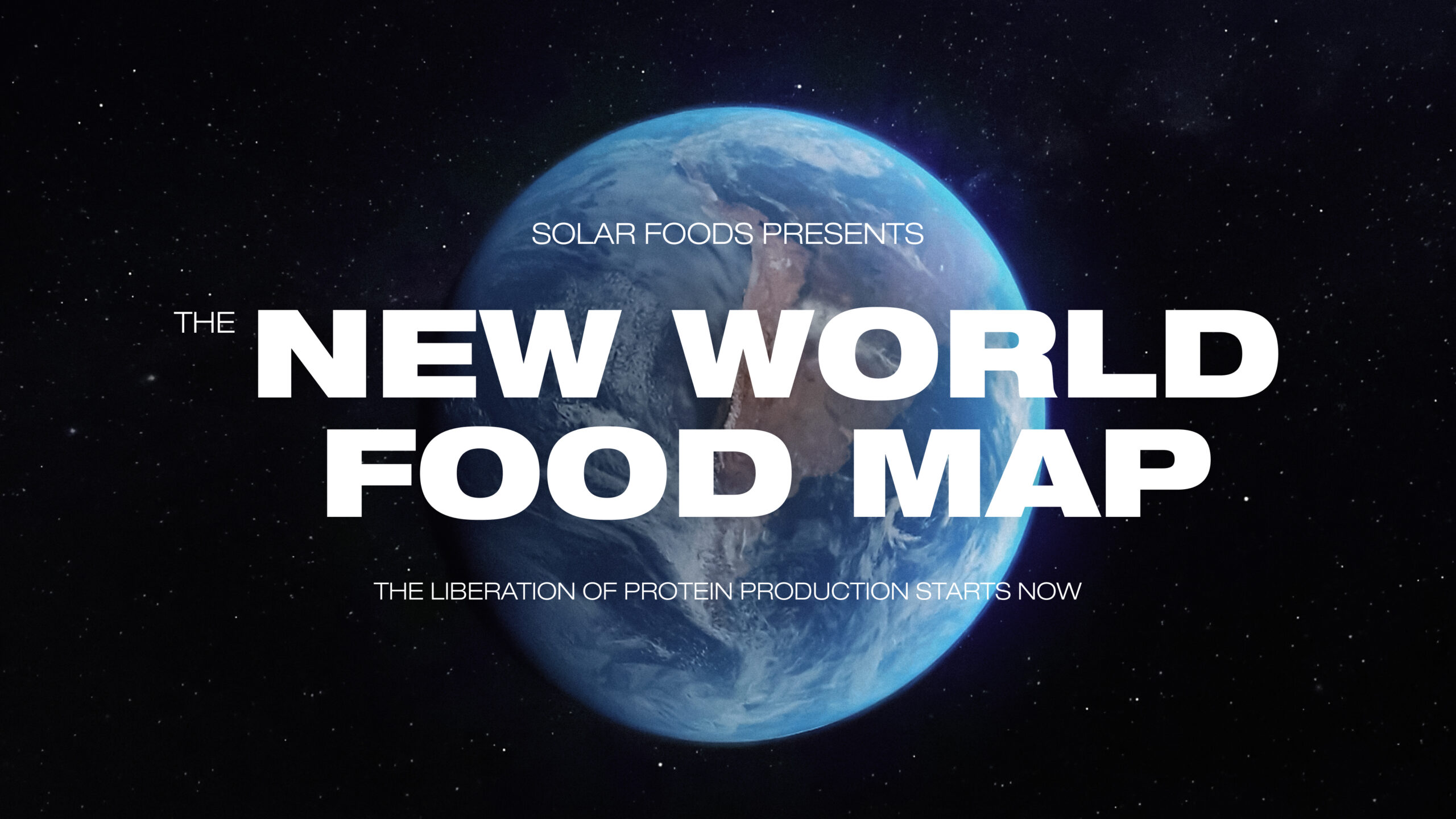Solar Foods’ world map shows the revolution of food production

The Finnish food technology start-up Solar Foods has published an interactive map based on its revolutionary vision. The New World Food Map1 shows the best places for future protein production. In the future it is possible to de-link protein production from environmental resources and climate conditions. You can view the potential of every country on the map.
Humankind is facing great challenges. According to estimates made by the UN, by 2050, the global population will be over 9 billion2. We would need approximately 50% more food while also fighting climate change so that our Earth remains habitable. It is clear that we need new solutions, while the entire planetary food system needs to be reinvented. As it stands, our current food production is unsustainable.
“We published a world map that shows the new era of food production. Our vision is to change the way food is produced. We want to de-link protein production from the increasing consumption of environmental resources. The world has hope. The food of the future is not a utopia but is happening now,” says Pasi Vainikka, CEO and founding partner of Finland-based food tech start-up Solar Foods.
Just published, The New World Food Map shows the current situation of food production and the tremendous opportunities for the future. Favourable places for protein made out of thin air can also be those locations where food production has previously been impossible. In the future, extreme conditions can be harnessed to produce food. Natural protein is created, for example, where the sun is scorching hot or where the landscape is unsuitable and the winds relentlessly strong.
The new way to harvest food: a vision to liberate protein production
Solar Foods’ vision is revolutionising the current food production order and the way we think. In 2018, the company announced it is developing technology which allows protein to be produced out of thin air – completely without agriculture, animals, or plants.
“Until now, food production has been dependent on agriculture and climate conditions. We can provide humankind with a whole new harvest. With the latest development, it is possible to grow crops at the microbial level. Dietary protein can be produced in areas where food production has previously been impossible, such as the desert, the Arctic or even space,” says Pasi Vainikka.
The New World Food Map shows how the world can change. “If protein production is disconnected from agriculture, pastures can be turned back into forests and to other carbon sinks. Imagine the kind of impact this will have on fighting against climate change,” says Vainikka.
The world’s most sustainable protein
Today, half of the world’s habitable land is used for agriculture 3. On average, agriculture accounts for 70 percent of global freshwater withdrawals4. An estimated 25 percent of man-made greenhouse gases come from food5. Solar Foods’ vision is to address these challenges. Land previously used for agriculture can be let to afforest, turning said land to carbon sinks.
The technology and bioprocess developed by Solar Foods allow for a whole new kind of nutrient-rich protein to be produced using air and electricity. The Solein® protein, which is now in the pilot production phase, is 10-100 times more climate-friendly than any animal or plant-based alternative.
“I want to encourage scientists to be more open. Solar Foods has the solution to renew food production. As a science-based company, we also have a responsibility to educate people, the food industry, and decision-makers about new innovations in food production. It’s possible to choose a sustainable way. Technological development makes it possible,” states Vainikka.
Solar Foods sees a bright future for our planet. The philosophy behind the company is possibilism. “We are neither optimists nor pessimists. Seizing opportunities while utilising technology and high-level know-how can truly change the world,” says Vainikka.
Solar Foods is taking steps towards the commercial manufacture of the Solein protein and bringing it on consumer plates. “At this point, we are preparing to apply for a novel food permit and are also planning to build a demonstration plant. The company aims to start commercial production of the Solein protein by the end of 2022. At the start-up phase, production is estimated at between 5 and 50 million meals a year.”
The New World Food Map: www.solarfoods.com/map.
Press assets:
- Press images
- Map
- Film (Vimeo)
- Film (YouTube)
- Pressroom
Media inquiries:
Pasi Vainikka, D.Sc. (Tech.), CEO, Solar Foods Ltd., tel. +358 40 5825 987, pasi@solarfoods.com
1 The World Food Map 2030 is based on a LUT University study Power-to-SCP (Single Cell Protein) in 2030 by Mahdi Fasihi, Fatemeh Jouzi, Christian Breyer, Solar Economy Group, LUT (2020). The Global SCP simulation will be published soon.
2 un.org/en/sections/issues-depth/population/index.html
3 Data Source: UN Food and Agriculture Organization (FAO)
ourworldindata.org/land-use
4 Data Source: Food and Agriculture Organization (FAO)
fao.org/3/a-i7959e.pdf
fao.org/aquastat/en/overview/methodology/water-use
5 Data Source: IPCC Report: ipcc.ch/site/assets/uploads/2019/08/2f.-Chapter-5_FINAL.pdf
ourworldindata.org/food-ghg-emissions
About Solar Foods
Solar Foods produces protein using air and electricity. Solar Foods revolutionises food production with a method that is not dependent on agriculture, the weather, or the climate. The company was founded in Espoo, Finland, in 2017 by Dr Pasi Vainikka and Dr Juha-Pekka Pitkänen as a spinoff from a research programme at VTT Technical Research Centre of Finland and the Lappeenranta University of Technology.

